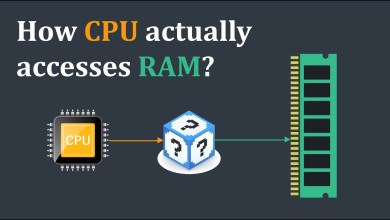Security Controls – CompTIA Security+ SY0-701 in 4 Minutes
Understanding the 6 Types of Security Controls in CompTIA Security+ (SY0-701) Cybersecurity
What are the 6 Types of Security Controls in CompTIA Security+ (SY0-701)? 🤔
In the ever-evolving world of cybersecurity, understanding various types of security controls is crucial—especially for those studying CompTIA Security+ (SY0-701). Just like a skilled doctor uses different treatments depending on the nature and stage of an illness, security professionals implement specific controls based on the threats and vulnerabilities they encounter. Let’s dive into the 6 basic types of security controls and explore when to use each one to keep your organization safe! 💻
1. Preventative Controls: Shield Your Systems Before It’s Too Late! 🚫
Preventative controls are the first line of defense. They’re proactive measures that stop potential threats before they can cause any damage. For instance, firewalls filter incoming and outgoing traffic, blocking harmful data packets before they reach your network. These controls create a robust perimeter that prevents unauthorized access.
Example: Installing firewalls to block suspicious traffic and using encryption to protect sensitive data are classic preventative controls.
2. Deterrent Controls: Scare Away the Intruders! 🚨
Deterrent controls discourage would-be attackers by making it clear that your organization is not an easy target. For example, warning signs outside a building or on websites indicating surveillance can dissuade intruders.
Example: A security alarm sign outside your house or a banner on a website that states “This site is monitored” acts as a deterrent control, signaling that there will be consequences for any malicious activities.
3. Detective Controls: Spot the Threats as They Happen! 👀
Detective controls monitor and identify potential security breaches in real time. They don’t prevent incidents but alert you as soon as suspicious activity occurs. This way, you can respond quickly.
Example: An Intrusion Detection System (IDS) that constantly scans network traffic for anomalies and notifies administrators is a great example of a detective control.
4. Corrective Controls: Fixing the Damage Post-Incident! 🔧
When something goes wrong, corrective controls step in to fix the issue and restore your system to normal. After a threat is detected, these controls help minimize the impact and bring things back on track.
Example: Antivirus software that not only detects but also removes malware acts as both a detective and corrective control.
5. Compensating Controls: Alternatives When the Ideal Isn’t Possible! 🛠️
Sometimes, your preferred security measures aren’t feasible. Compensating controls come in as alternatives to maintain a high level of security. They’re essential when working with legacy systems that can’t support the latest security protocols.
Example: Using WPA2 with a VPN instead of WPA3 for legacy systems is a common compensating control that ensures encrypted communication despite using older technology.
6. Directive Controls: Set the Rules for Security! 📜
Directive controls include policies and procedures that set expectations for behavior and use of resources. These controls ensure that everyone in the organization knows how to maintain security standards.
Example: An Acceptable Use Policy (AUP) that outlines how employees should use company assets is a directive control, guiding user behavior.
Ready to Master Cybersecurity with CompTIA Security+ (SY0-701)? 🔥
Effective security requires a blend of these 6 types of controls—from proactive measures like preventative controls to policies set by directive controls. Understanding when and how to use each control ensures that your organization remains protected from evolving cyber threats.
💡 Subscribe for tech insights on System, Network, Virtualization, Cloud Computing, and Cybersecurity!
#CompTIA #SecurityPlus #SY0701 #Cybersecurity #SecurityControls #TechTips #NetworkSecurity #CyberAwareness #TechEducation #DataProtection #Trending #Virtualization #CloudComputing
Follow us on social media for updates:
Learn More:
Enroll in our specialized courses on cloud computing and virtualization at Enhance your skills with our in-depth training programs and take your career to the next level!
Contact Us:
For any queries or support, reach out to us at asif@upskillwithasif.com or call us at +91-8121701785.
Follow Us:
Udemy Profile:
YouTube Channel:
Instagram:
LinkedIn Profile:
Make sure to subscribe to our channel for the latest insights in System Administration, Networking, Virtualization, Cloud Computing, and Cybersecurity! 🔔
[ad_2]
source



